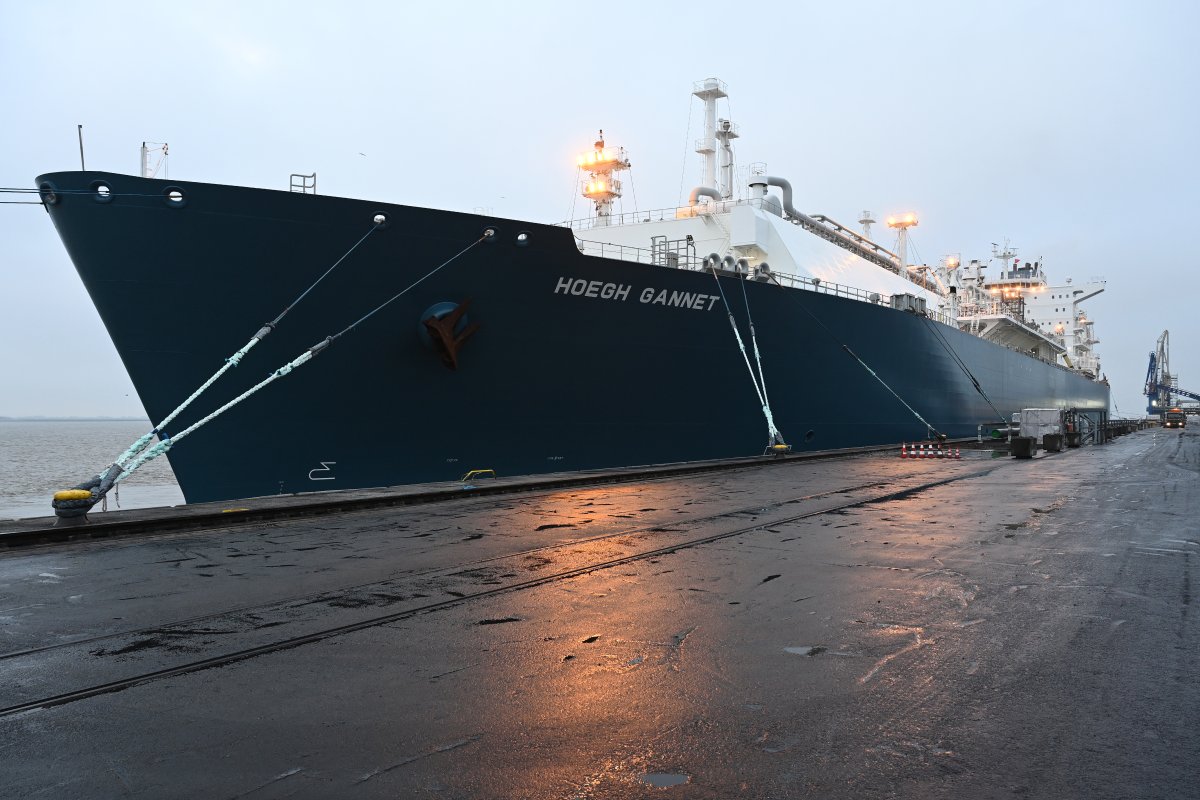State-owned German LNG terminal operator DET said its FSRU-based LNG terminal in Brunsbüttel has achieved a record sendout rate since the commissioning of the facility in March last year.
The 170,000-cbm FSRU Hoegh Gannet, which serves the Elbehafen LNG import terminal Brunsbüttel, started supplying regasified LNG to the German grid on March 22, 2023 as part of the commissioning phase.
Hoegh Gannet can regasify up to 750 mmscfd. It received its first LNG tanker on February 14 last year from UAE’s Adnoc and the second tanker from the US on April 22.
RWE developed the project with Hoegh LNG, Brunsbüttel Ports, and other partners on behalf of the German government.
DET said in a social media post on Friday that “121.5 GWh/d have been delivered from Hoegh Gannet as daily average rate into the German grid so far this month.”
This is the highest sendout rate ever measured since the commissioning of the terminal in March 2023, it said.
For comparison, the average sendout during the same period last year equaled to only about 50 GWh/d, it said.
“The more than doubled sendout rate was reached in close coordination with Hoegh thanks to optimization of technical processes, allowing us to make use of higher grid capacities after the commissioning of the Gasunie ETL 180 pipeline,” DET said.
With the increased sendout rate, “another step forward towards more energy security for Germany and our European neighbors has been taken,” DET said.
Hoegh Gannet is currently located at the Brunsbüttel Port’s existing dangerous goods berth in Brunsbüttel’s Elbehafen port but it will be relocated to a new dedicated jetty.
In April this year, Brunsbüttel Ports officially started building the jetty which will host Hoegh Gannet.
The new jetty is being built to the west of Hoegh Gannet’s current location.
Four FSRUs
In January last year, the German government established DET to manage FSRU-based LNG import terminals.
Besides the facility in Brunsbüttel, DET operates the Wilhelmshaven 1 terminal, which features the 170,000-cbm FSRU Hoegh Esperanza.
DET recently told LNG Prime that it expects to receive the first cargo at its FSRU-based LNG import terminal in Stade in the second half of this year.
In March, the 2021-built 174,000-cbm FSRU, Energos Force, owned by Apollo’s Energos Infrastructure, arrived at the AVG jetty in Germany’s Stade.
In addition, DET expects commissioning to start at the its second terminal in Wilhelmshaven during the second half of this year.
Unlike the three other three FSRU-based terminals, the jetty for the second Wilhelmshaven LNG terminal is located some 1.5 kilometers offshore Wilhelmshaven.
Excelerate’s 138,000-cbm FSRU Excelsior arrived at the Navantia yard in El Ferrol, Spain last year for a planned stopover prior to its job in Wilhelmshaven. The FSRU is still located there.
Besides working on commissioning the two new facilities, DET recently announced a new marketing round for new regasification capacities (including storage and sendout) for its terminals.
The LNG terminal operator is offering short-term and long-term regasification capacity.

